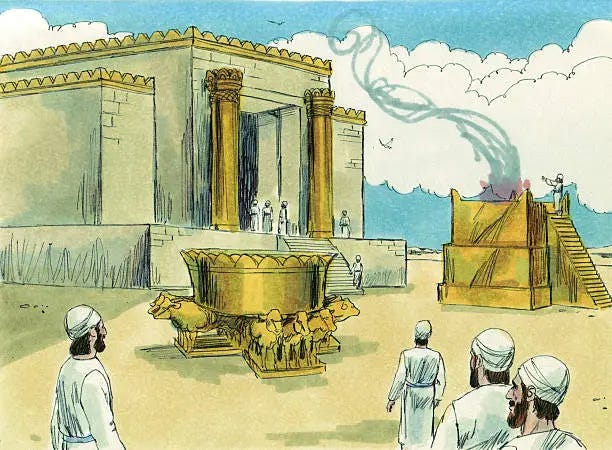Filled With Cloud and Glory
The Inauguration of the Jerusalem Temple in 1 Kings 8
This post is for paid subscribers. If you’ve been encouraged by the content of this Biblical Theology site, and if you’d like to have complete and unending access to hundreds of archived articles, consider supporting this newsletter. And check out my new book, Walking the Way of the Wise, available here from IVP Academic.
There came a day when a portable sanctuary for the Israelites was no longer necessary. Though the days of the tabernacle had been part of an important era in Israel’s history, those days came to an end.
The tabernacle became unnecessary because Solomon constructed a temple in Jerusalem. Or, more accurately, Solomon stimulated and oversaw its construction. In 1 Kings, we learn that the construction began “in the fourth year of Solomon’s reign over Israel” (1 Kgs. 6:1), which was approximately the year 966 BC (since Solomon’s reign began in 970 BC). And we’re told that in “the eleventh year, in the month of Bul, which is the eighth month, the house was finished in all its parts, and according to all its specifications. He was seven years in building it” (1 Kgs. 6:38).
So, after seven years of construction, the temple in Jerusalem was ready. And then, when Solomon called for the ark to be brought into the temple (1 Kgs. 8:1–9), something extraordinary happened.


